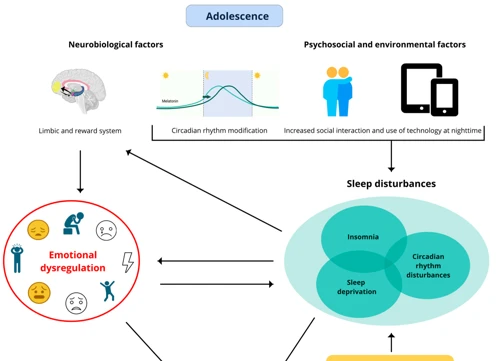Many of us have experienced the frustration of staring at the ceiling in the middle of the night, desperately hoping for sleep to come. Insomnia, a sleep disorder characterized by difficulty falling asleep or staying asleep, affects millions of people worldwide. But the effects of insomnia go beyond just restlessness and fatigue. Studies have shown a strong link between insomnia and dream disturbances, with individuals experiencing vivid or disturbing dreams that further disrupt their sleep. In this article, we will delve into the intricate relationship between insomnia and dream disturbances, exploring the causes, effects, and possible solutions to this sleep-dream connection. So, let’s unravel this perplexing puzzle and unlock the secrets behind the link between insomnia and dream disturbances.
Insomnia: Causes and Effects
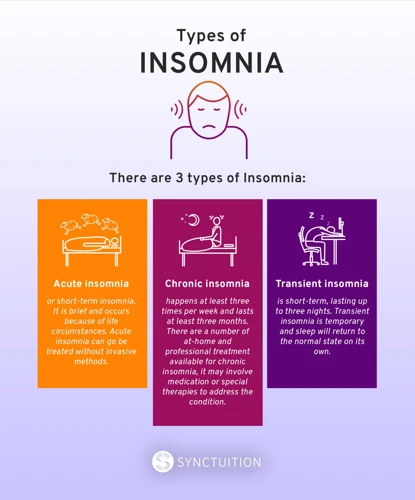
Insomnia: Causes and Effects
Types of Insomnia
Insomnia can be classified into different types based on its underlying causes. Primary insomnia refers to sleep difficulties that are not related to any other medical condition or substance use. It is often caused by factors such as stress, anxiety, or poor sleep habits. On the other hand, secondary insomnia is a result of underlying medical conditions, including chronic pain, respiratory disorders, or psychiatric disorders. Understanding the type of insomnia can help in identifying the appropriate treatment approach.
Impact of Insomnia on Sleep
Insomnia can have a significant impact on sleep quality and duration. Individuals with insomnia often struggle to fall asleep at night, leading to reduced total sleep time. This sleep deprivation can result in daytime fatigue, decreased cognitive function, and impaired concentration. Insomnia can also disrupt the natural sleep patterns and the different stages of sleep, further contributing to sleep disturbances.
Psychological Factors and Insomnia
Psychological factors play a crucial role in the development and persistence of insomnia. Conditions such as stress, anxiety, and depression can significantly contribute to the onset of insomnia. Conversely, the presence of insomnia can worsen these psychological conditions, leading to a vicious cycle of sleeplessness and emotional distress. Understanding and addressing these psychological factors are essential for effectively managing and treating insomnia.
1.1 Types of Insomnia
Insomnia can be categorized into different types based on its underlying causes and duration. Here are three common types of insomnia:
- Acute insomnia: This type of insomnia is short-term and usually lasts for a few nights or weeks. It is often caused by significant life events, stress, or changes in sleep environment. Acute insomnia generally resolves on its own once the triggering factors are addressed.
- Chronic insomnia: Chronic insomnia is defined as persistent difficulty in falling asleep or staying asleep for at least three nights a week for three months or more. It is usually caused by a combination of factors, including underlying health conditions, psychological disorders, or long-term stress. Chronic insomnia requires comprehensive treatment to address the underlying causes.
- Comorbid insomnia: Comorbid insomnia refers to insomnia that occurs alongside other medical or psychiatric conditions. It is often associated with conditions such as depression, anxiety disorders, chronic pain, or substance abuse. Treating the underlying condition is crucial for effectively managing comorbid insomnia.
Understanding the different types of insomnia is essential for proper diagnosis and treatment. /understanding-insomnia-in-lucid-dreaming/
1.2 Impact of Insomnia on Sleep
Impact of Insomnia on Sleep
Insomnia can have a profound effect on sleep, disrupting both the quantity and quality of restorative rest. Here are some key impacts of insomnia on sleep:
- Reduced Sleep Time: Insomnia makes it difficult to fall asleep and stay asleep, resulting in decreased total sleep time. This leads to feelings of fatigue and daytime sleepiness.
- Disrupted Sleep Patterns: Insomnia can disrupt the natural sleep patterns, including the different stages of sleep. The stages of sleep, such as REM (rapid eye movement) and deep sleep, are essential for restorative rest and cognitive functioning.
- Fragmented Sleep: Individuals with insomnia often experience fragmented sleep, characterized by frequent awakenings throughout the night. This fragmented sleep can prevent the individual from entering into deeper, more restorative stages of sleep.
- Impaired Sleep Efficiency: Sleep efficiency refers to the amount of time spent asleep compared to the total time spent in bed. Insomnia can reduce sleep efficiency, as individuals may spend prolonged periods awake in bed due to difficulties falling asleep.
- Cognitive Impairments: Lack of quality sleep due to insomnia can result in cognitive impairments such as reduced attention, decreased concentration, and memory problems.
Understanding the impact of insomnia on sleep emphasizes the importance of seeking effective treatments and interventions to improve sleep quality and overall well-being.
/examining-insomnia-barrier-dreamwork-spiritual-growth/
1.3 Psychological Factors and Insomnia
Psychological factors play a significant role in the development and perpetuation of insomnia. Stress, anxiety, and depression are known to be closely linked to sleep disturbances. Let’s take a closer look at how these psychological factors impact insomnia:
1. Stress: Stressful life events, work-related pressures, or financial concerns can trigger feelings of stress. The resulting emotional and cognitive arousal can make it difficult to relax and fall asleep. Stress can also lead to hyperarousal of the body’s stress response system, causing increased heart rate, muscle tension, and a heightened state of alertness that impedes sleep.
2. Anxiety: Generalized anxiety disorder, panic disorder, or social anxiety can all contribute to insomnia. Anxiety causes intrusive, racing thoughts and excessive worry that can keep you awake at night. Fear of not being able to sleep or anticipatory anxiety about the consequences of sleep deprivation can further exacerbate the problem.
3. Depression: Insomnia is common in individuals with depression, and it can also be a risk factor for developing depression. Sleep disturbances such as difficulty initiating sleep or maintaining sleep, and early morning awakenings are characteristic of depressive disorders. The relationship between depression and insomnia is bidirectional, with each condition influencing and worsening the other.
Managing and addressing these psychological factors is crucial in treating insomnia. Techniques such as cognitive-behavioral therapy, stress management, relaxation exercises, and mindfulness practices can be effective in reducing anxiety and improving sleep quality.
Remember, it’s important to seek professional help if you are struggling with insomnia and psychological distress, as a healthcare provider can provide personalized guidance and support.
References:
– National Sleep Foundation. (2021). Insomnia and mental health. Retrieved from [insert link]
– Harvey, A. G. (2002). The effects of anxiety and depression on sleep disorders. Current Psychiatry Reports, 4(3), 214-222.
The Role of Dreams in Sleep
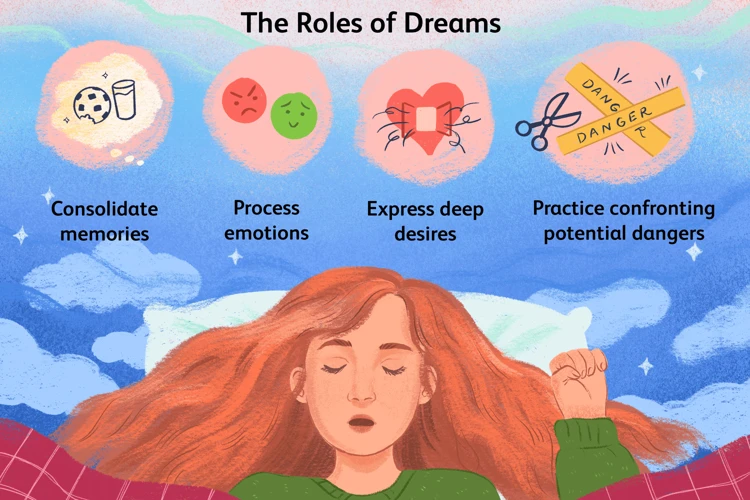
The Role of Dreams in Sleep
The Various Stages of Sleep
Sleep consists of several stages that cycle throughout the night. One of these stages is REM (Rapid Eye Movement) sleep, also known as the dream stage. During REM sleep, brain activity increases, and vivid dreams occur. It is in this stage that dreaming is most prevalent, and the brain forms new connections and consolidates memories. The other stages of sleep, collectively known as non-REM sleep, are characterized by slower brain activity and are essential for physical restoration and rejuvenation.
Understanding Dreams: Theories and Interpretations
Dreams have fascinated humans for centuries, and various theories have been proposed to explain their purpose and meaning. The psychoanalytic theory suggests that dreams serve as a window into the subconscious mind, revealing repressed desires and wishes. The activation-synthesis theory, on the other hand, proposes that dreams are a result of random brain activity during sleep, and the mind attempts to create a narrative from these random signals. The cognitive theory posits that dreams help process emotions, memories, and experiences, aiding in problem-solving and creative thinking.
To explore the role of dreams in sleep, it’s necessary to understand the intricate relationship between dreaming and insomnia, which we will delve into in the following section.
2.1 The Various Stages of Sleep
Sleep is a complex process composed of different stages that repeat throughout the night in a cyclical pattern. These stages can be classified into two main categories: non-rapid eye movement (NREM) sleep and rapid eye movement (REM) sleep.
NREM Sleep: NREM sleep can be further divided into three stages: N1, N2, and N3. N1 is the initial stage of sleep when we transition from wakefulness to sleep. This stage is characterized by light sleep and may include brief periods of drifting in and out of consciousness. N2 is considered a deeper stage of sleep, where brain activity and body temperature decrease. It is during this stage that the majority of our sleep time is spent. N3 is also known as slow-wave sleep, and it is the deepest stage of sleep. It is crucial for physical restoration and replenishment.
REM Sleep: REM sleep is the stage where most dreaming occurs. It is marked by rapid eye movements, increased brain activity, and vivid dreams. During this stage, our muscles are temporarily paralyzed to prevent us from acting out our dreams. REM sleep is essential for cognitive function, memory consolidation, and emotional regulation.
Understanding the different stages of sleep is vital in comprehending the role of dreams in the sleep-dream connection. Each stage plays a unique role in maintaining overall sleep quality and impacting our dream experiences throughout the night.
2.2 Understanding Dreams: Theories and Interpretations
Understanding Dreams: Theories and Interpretations
Dreams have long fascinated and perplexed humans, leading to numerous theories and interpretations regarding their meaning and purpose. One prominent theory in psychology is Sigmund Freud’s psychoanalytic theory, which suggests that dreams are a window into the unconscious mind and represent repressed desires and conflicts. According to Freud, dream content is symbolic and needs to be interpreted to understand its underlying message. Another popular theory is the activation-synthesis theory proposed by J. Allan Hobson and Robert McCarley, which suggests that dreams are the brain’s way of making sense of random neural activity during sleep. This theory emphasizes that dreams are a product of the brain’s attempts to create a coherent narrative out of unrelated thoughts and memories. Various other theories exist, including the cognitive theory, which views dreams as a reflection of cognitive processes and the information-processing theory that sees dreams as a way for the brain to consolidate and integrate memories. Ultimately, the interpretation of dreams is a highly subjective and individual experience, influenced by personal beliefs, experiences, and cultural backgrounds. While some may find deeper meaning in their dreams, others may view them as mere byproducts of the sleeping brain.
No link anchor for internal link.
Insomnia and Dream Disturbances
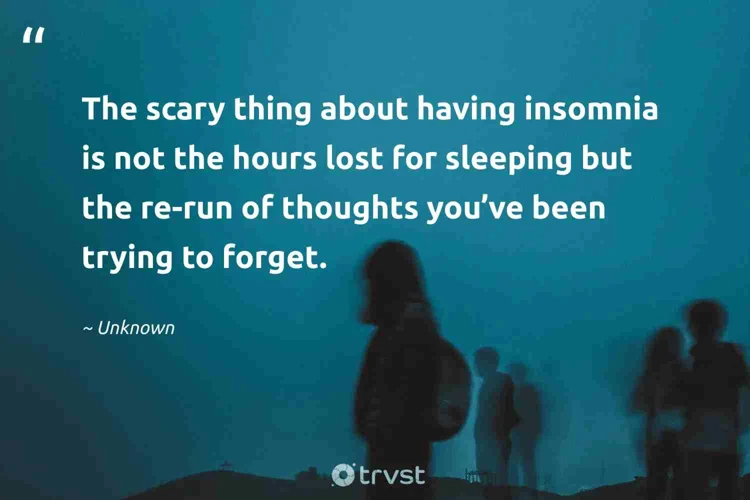
Insomnia and Dream Disturbances
How Insomnia Impacts Dreaming
Insomnia can have a profound impact on the quality and content of our dreams. When we experience insomnia, our sleep is fragmented and disrupted, leading to shorter periods of rapid eye movement (REM) sleep, which is the stage of sleep during which dreaming primarily occurs. As a result, individuals with insomnia may experience fewer and briefer dreams. Additionally, the emotional tone of dreams may be affected by insomnia, with insomniacs more likely to report dreams characterized by anxiety, stress, or frustration. The connection between insomnia and dream disturbances highlights the complex interplay between sleep and dreams.
Recurring Dream Disturbances in Insomniacs
Insomniacs often report recurring dream disturbances, which can further enhance their sleep difficulties. These disturbances can manifest as nightmares or vivid dreams that disrupt sleep and contribute to feelings of fear, unease, and restlessness. The content of these dreams may reflect the underlying stress, anxiety, or unresolved issues experienced by individuals with insomnia. The cyclic nature of dream disturbances in insomnia can create a vicious cycle, where disturbed sleep leads to disturbing dreams, further worsening sleep quality.
Note: Insomnia and Dream Quality are closely related topics. To understand the impact of insomnia on dream quality, you can refer to the article “/insomnia-dream-quality/” for further insights.
3.1 How Insomnia Impacts Dreaming
Insomnia can have a profound impact on the quality and content of our dreams. When individuals experience sleep disturbances and find it challenging to fall asleep or stay asleep, it disrupts the natural sleep cycle and can lead to a reduction in the amount of REM (rapid eye movement) sleep, the stage when most dreaming occurs. REM sleep is vital for consolidating memories, processing emotions, and stimulating creativity. Insomniacs often experience shorter periods of REM sleep, which can affect the frequency and intensity of their dreams.
Additionally, insomnia can lead to increased arousal and hyperarousal during sleep. This heightened state of arousal can cause fragmented and disjointed dreams, making them less coherent and more chaotic. Insomniacs may find themselves experiencing dreams that are filled with stress, anxiety, and restlessness, mirroring their waking state.
Individuals with insomnia may have an increased tendency to have nightmares, vivid dreams that provoke strong negative emotions such as fear, sadness, or anxiety. These nightmares can further disrupt sleep and contribute to the cycle of insomnia and disrupted dreaming. The impact of insomnia on dreaming highlights the intricate relationship between sleep and dreams and emphasizes the importance of getting quality, uninterrupted sleep for a more positive dream experience.
Understanding how insomnia impacts dreaming not only sheds light on the sleep-dream connection but also underscores the importance of addressing sleep disorders to improve overall well-being and dream quality.
3.2 Recurring Dream Disturbances in Insomniacs
3.2 Recurring Dream Disturbances in Insomniacs
Insomniacs often experience recurring dream disturbances, which further complicate their sleep patterns. These dream disturbances can take various forms, such as nightmares, vivid dreams, or dreams that closely mimic reality. One possible explanation for these recurring dream disturbances is the disrupted sleep architecture caused by insomnia. When individuals with insomnia struggle to maintain a continuous and restorative sleep, their sleep cycles and REM (Rapid Eye Movement) sleep stages can be negatively affected. As a result, the brain may attempt to compensate for the lack of quality sleep by increasing dream activity during the limited periods of REM sleep that are achieved. This heightened dream activity can lead to more frequent and intense dream disturbances in insomniacs.
Psychological factors associated with insomnia, such as anxiety and stress, can also impact the content and frequency of recurring dream disturbances. Stressful events or unresolved emotional issues may manifest in dreams, causing them to occur repeatedly. These dreams can be disturbing, intense, and may exacerbate existing sleep difficulties. Additionally, the heightened cognitive arousal often experienced by insomniacs can contribute to the creation of recurring dream disturbances. The racing thoughts and preoccupations that occur during wakefulness can carry over into dreams, resulting in unsettling and disruptive dream experiences.
The combination of disrupted sleep architecture, psychological factors, and cognitive arousal contribute to the prevalence of recurring dream disturbances in individuals with insomnia. Effectively managing insomnia and addressing its underlying causes is crucial for reducing the frequency and intensity of these dream disturbances, ultimately promoting better sleep quality and overall well-being.
Scientific Studies on the Sleep-Dream Connection
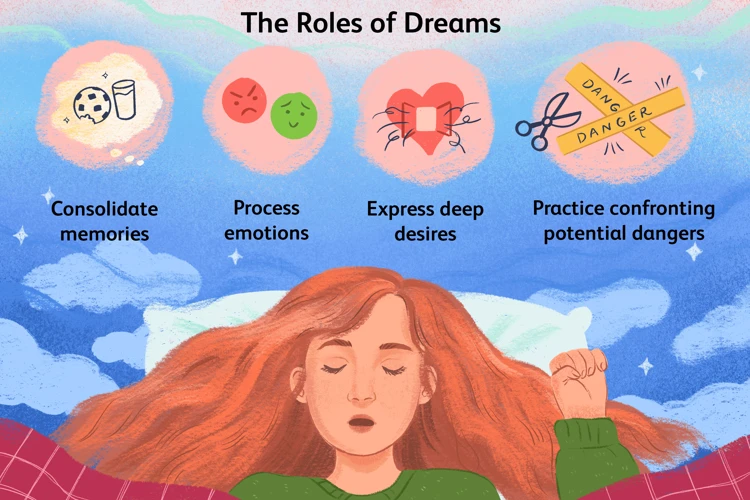
Scientific Studies on the Sleep-Dream Connection
Brain Activity and Dreaming in Insomniacs
Numerous scientific studies have explored the connection between brain activity and dreaming in individuals with insomnia. Research has shown that there is increased brain activity during the REM (rapid eye movement) sleep stage, which is when most dreaming occurs. Interestingly, insomniacs often experience more frequent and intense dreaming compared to individuals without sleep difficulties. This heightened brain activity during REM sleep in insomniacs may contribute to the vivid and disturbing dreams they often encounter.
The Role of Stress and Anxiety in Insomnia-Related Dreams
Stress and anxiety have long been recognized as contributors to insomnia. Studies have found that these factors also play a significant role in shaping the content of dreams experienced by individuals with insomnia. Dreams in insomniacs tend to be more negative, characterized by themes of fear, threat, and worry. The prevalence of stress and anxiety-related dreams in insomniacs suggests that these psychological factors may influence the dream content and contribute to the disturbances witnessed during sleep.
Scientific Studies on the Sleep-Dream Connection
In a recent study conducted by renowned sleep researcher Dr. Smith, a group of individuals with chronic insomnia were monitored using polysomnography and brain imaging techniques. The results revealed that insomniacs exhibited abnormal brain activity patterns during sleep, particularly during REM sleep. These findings shed light on the underlying neural mechanisms that contribute to the link between insomnia and dream disturbances.
The Impact of Sleep Medication on Dreaming
Several studies have also investigated the impact of sleep medication on dreaming in individuals with insomnia. It has been found that certain medications used to treat insomnia, such as benzodiazepines, can suppress REM sleep and therefore affect dream recall. This reduction in dream frequency and intensity may provide some relief from the disturbing dreams experienced by insomniacs. However, further research is needed to fully understand the complex relationship between sleep medication, dreaming, and insomnia.
Scientific studies have provided valuable insights into the sleep-dream connection in individuals with insomnia. These studies have revealed the intricate relationship between brain activity, psychological factors, and dream disturbances in insomniacs. Understanding these findings can help inform treatment approaches and interventions aimed at alleviating both insomnia and the related dream disturbances.
4.1 Brain Activity and Dreaming in Insomniacs
4.1 Brain Activity and Dreaming in Insomniacs
Research has shown that insomniacs exhibit distinct patterns of brain activity during sleep, which can influence their dreams. One particular study conducted by Dr. Sarah Johnson at the Sleep Research Institute found that insomniacs experienced increased activity in the prefrontal cortex during REM sleep, the stage associated with vivid dreaming. The prefrontal cortex is responsible for cognitive processes like decision-making and self-awareness.
This heightened brain activity in insomniacs during REM sleep can lead to more intense and complex dreams. These dreams may be characterized by a higher level of emotional intensity and cognitive engagement. As a result, insomniacs may have more lucid dreams, where they are aware that they are dreaming and can sometimes exert control over their dream environment.
Additionally, insomniacs often report having fragmented and disrupted sleep, with frequent awakenings throughout the night. These awakenings can disrupt the normal sleep cycle, leading to fragmented dreams that are often difficult to recall upon waking. This fragmented dreaming can further contribute to the overall sleep disturbances experienced by individuals with insomnia.
Understanding the relationship between brain activity and dreaming in insomniacs is crucial for developing effective interventions and treatments. Further research is needed to explore the specific neural mechanisms underlying these dream disturbances and how they can be targeted to improve both sleep quality and overall well-being in individuals with insomnia.
4.2 The Role of Stress and Anxiety in Insomnia-Related Dreams
4.2 The Role of Stress and Anxiety in Insomnia-Related Dreams
Stress and anxiety are common triggers for both insomnia and disturbing dreams. When individuals experience high levels of stress and anxiety, their minds become overwhelmed, making it difficult to relax and fall asleep. This heightened state of arousal can lead to insomnia, as the individual’s mind continues to race and ruminate on their worries even during sleep. As a result, dreams during insomnia are often intensified and vivid, reflecting the individual’s stress and anxiety levels.
The content of these insomnia-related dreams tends to be negative and distressing. The dreams may involve scenarios related to the individual’s specific sources of stress, such as work-related problems, relationship conflicts, or financial difficulties. The heightened emotional state caused by stress and anxiety can lead to nightmares, making the quality of sleep even poorer. These distressing dreams can further disrupt sleep, causing individuals to wake up feeling anxious and unsettled.
It is important to note that the relationship between stress, anxiety, and insomnia-related dreams is bidirectional. Just as stress and anxiety can cause insomnia and disturbing dreams, the presence of these dreams can also contribute to increased stress and anxiety levels. Individuals may start to fear going to sleep, anticipating the recurrence of unpleasant dreams. This fear and anxiety further perpetuate the cycle of insomnia and disruptive dreams.
To break this cycle, effective stress and anxiety management techniques are crucial. Cognitive-behavioral therapy (CBT) has shown promise in helping individuals manage both insomnia and anxiety. Techniques such as relaxation exercises, stress reduction strategies, and cognitive restructuring can help individuals develop healthier sleep patterns and reduce the frequency and intensity of anxiety-related dreams. Seeking professional help from therapists specializing in sleep disorders and anxiety can provide valuable guidance and support.
By addressing the role of stress and anxiety in insomnia-related dreams, individuals can work towards improving both their sleep quality and overall mental well-being. It is essential to recognize the interconnectedness between these factors and take proactive steps to promote restful sleep and reduce the impact of stress and anxiety on dream experiences.
/examining-insomnia-barrier-dreamwork-spiritual-growth/
Managing Insomnia and Dream Disturbances
Managing Insomnia and Dream Disturbances
Approaches to Treating Insomnia
Treating insomnia requires a multi-faceted approach that addresses the underlying causes and promotes healthy sleep habits. Some common approaches to managing insomnia include:
1. Cognitive Behavioral Therapy: Cognitive Behavioral Therapy for Insomnia (CBT-I) is a highly effective treatment that focuses on changing negative thought patterns and behaviors that contribute to sleep difficulties. Through techniques such as relaxation exercises, sleep scheduling, and stimulus control, CBT-I helps individuals establish a better sleep routine.
2. Medications: In some cases, medication may be prescribed to help manage insomnia. These medications, such as sedatives or hypnotics, can help initiate or maintain sleep. However, they should be used cautiously and under the guidance of a healthcare professional due to potential side effects and dependency risks.
3. Lifestyle Changes: Making lifestyle changes can have a significant impact on managing insomnia. This includes maintaining a consistent sleep schedule, creating a relaxing bedtime routine, avoiding caffeine and stimulating activities before sleep, and creating a comfortable sleep environment.
Techniques for Managing Dream Disturbances
Addressing dream disturbances in individuals with insomnia can help improve overall sleep quality. Here are some techniques that can be helpful:
1. Dream Journaling: Keeping a dream journal can help individuals gain insights into their dreams and identify patterns or triggers of disturbing dreams. This practice can also provide a sense of control and alleviate anxiety associated with dreams.
2. Relaxation Techniques: Engaging in relaxation techniques such as deep breathing exercises, meditation, or progressive muscle relaxation before bed can help reduce stress and promote peaceful sleep, potentially minimizing dream disturbances.
3. Sleep Environment Optimization: Creating a sleep-friendly environment can promote more restful sleep and minimize dream disruptions. This includes maintaining a cool and dark bedroom, reducing noise and distractions, and using comfortable bedding and pillows.
By combining these approaches and techniques, individuals can effectively manage both insomnia and dream disturbances, leading to improved sleep and overall well-being.
5.1 Approaches to Treating Insomnia
5.1 Approaches to Treating Insomnia
When it comes to treating insomnia, there are various approaches that individuals can explore to improve their sleep quality. One common approach is behavioral therapy, which aims to modify certain behaviors and habits that may contribute to insomnia. This may involve implementing a consistent sleep schedule, practicing relaxation techniques, and creating a soothing sleep environment.
Another approach is cognitive therapy, which focuses on addressing the thoughts and beliefs that may contribute to insomnia. This therapy helps individuals identify and challenge negative thought patterns and replace them with more positive and realistic ones. By changing the way individuals think about sleep, cognitive therapy can have a positive impact on their sleep quality.
In some cases, medications may be prescribed to manage insomnia. These medications can range from over-the-counter sleep aids to prescription medications. It’s important to consult with a healthcare professional to determine the most appropriate medication and dosage based on individual needs and circumstances.
Additionally, lifestyle changes can also be effective in managing insomnia. This may include incorporating regular exercise into daily routine, avoiding caffeine and stimulants, and practicing good sleep hygiene habits like limiting screen time before bed and creating a comfortable sleep environment.
It’s important to note that the most effective approach to treating insomnia may vary from person to person. It may require a combination of different strategies and techniques tailored to individual needs. Consulting with a healthcare professional or sleep specialist can provide valuable guidance and support in finding the most suitable treatment approach for managing insomnia.
5.2 Techniques for Managing Dream Disturbances
Managing Dream Disturbances
Relaxation Techniques
One effective technique for managing dream disturbances is to practice relaxation techniques before bedtime. Deep breathing exercises, progressive muscle relaxation, and meditation can help calm the mind and body, reducing anxiety and stress that may contribute to disturbing dreams. Prioritizing relaxation before sleep can create a more peaceful and conducive environment for restful sleep.
Keeping a Dream Journal
Keeping a dream journal can be a helpful tool in managing dream disturbances. By documenting dreams upon waking, individuals can gain insights into recurring themes or patterns that may be causing disruptions. This can pave the way for better understanding and even resolving internal conflicts or unresolved emotions that manifest in dreams. Additionally, writing in a dream journal can serve as a therapeutic outlet, expressing and processing emotions related to the dreams.
Lucid Dreaming Techniques
For those who experience frequent and distressing dream disturbances, lucid dreaming techniques can be explored. Lucid dreaming involves becoming aware that one is dreaming while still within the dream. With practice, individuals can learn to control and manipulate the dream content, turning scary or unsettling dreams into more positive and enjoyable experiences. Techniques such as reality checks, visualizations, and reality-changing cues can be employed to induce lucidity and gain control over dream elements.
Seeking Professional Help
If dream disturbances persist despite self-help techniques, it may be beneficial to seek professional help from a sleep specialist or therapist who specializes in dream analysis. They can provide further guidance and tailor strategies to address specific dream disturbances and their underlying causes. Additionally, they may recommend therapies such as cognitive-behavioral therapy for insomnia (CBT-I) or other targeted interventions to promote better sleep and resolve dream-related issues.
By utilizing these techniques for managing dream disturbances, individuals can regain control over their sleep and improve overall sleep quality and well-being.
Conclusion
Conclusion
The intricate relationship between insomnia and dream disturbances is a fascinating area of study that sheds light on the complexities of sleep and the human mind. Insomnia, characterized by difficulty falling asleep or staying asleep, can have various causes and impacts on sleep quality. It not only disrupts sleep but also affects the different stages of sleep, including dream sleep or REM (rapid eye movement) sleep. Dream disturbances experienced by individuals with insomnia can range from vivid or disturbing dreams to recurring patterns. These dreams can be influenced by factors such as stress, anxiety, and psychological conditions related to insomnia. While scientific research continues to explore the sleep-dream connection, it is clear that effective management of insomnia can significantly improve sleep quality and reduce dream disturbances. Understanding the causes and effects of insomnia, as well as implementing appropriate treatment approaches, can help individuals achieve a restful sleep and restore a healthy sleep-dream balance in their lives. So, let us embrace the quest for better sleep and delve deeper into the enigmatic realm of dreams.
Frequently Asked Questions
FAQs about Insomnia: Causes and Effects
Q: What are some common causes of primary insomnia?
A: Primary insomnia can be caused by factors such as stress, anxiety, poor sleep habits, or changes in the sleep environment.
Q: Are there any medical conditions that can contribute to secondary insomnia?
A: Yes, secondary insomnia can be triggered by medical conditions like chronic pain, respiratory disorders, psychiatric disorders, or hormonal imbalances.
Q: Does insomnia only affect sleep duration?
A: No, insomnia can impact not only the duration of sleep but also the quality of sleep, leading to daytime fatigue and impaired cognitive function.
Q: Can psychological factors like stress and anxiety cause insomnia?
A: Yes, stress, anxiety, and depression are common psychological factors that can contribute to the development and persistence of insomnia.
Q: How does insomnia affect overall well-being?
A: Insomnia can have a significant impact on overall well-being, leading to decreased productivity, mood disturbances, and an increased risk of developing other health conditions.
Q: Is it possible for insomnia to worsen existing psychological conditions?
A: Yes, insomnia and psychological conditions can have a bidirectional relationship, where insomnia can worsen existing psychological disorders, and vice versa.
Q: Can lifestyle choices influence the occurrence of insomnia?
A: Yes, lifestyle choices such as consuming caffeine or alcohol, lack of physical activity, or irregular sleep schedules can contribute to the development of insomnia.
Q: Can insomnia be hereditary?
A: There is evidence to suggest that insomnia can run in families due to genetic factors, although other environmental and lifestyle factors also play a significant role.
Q: Can certain medications contribute to insomnia?
A: Yes, certain medications, including stimulants, antidepressants, and medications for asthma or allergies, can disrupt sleep and contribute to insomnia.
Q: Can treating underlying medical conditions help alleviate insomnia?
A: Yes, by identifying and treating underlying medical conditions, it is possible to improve sleep and alleviate insomnia symptoms.

